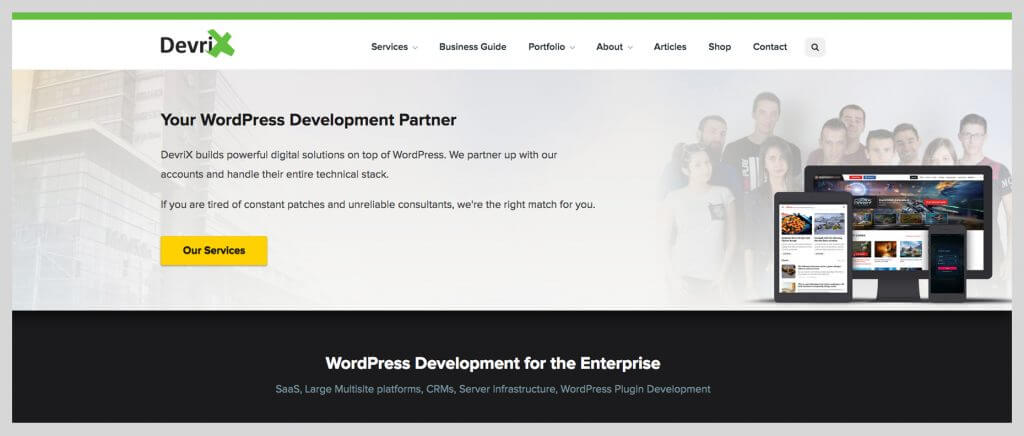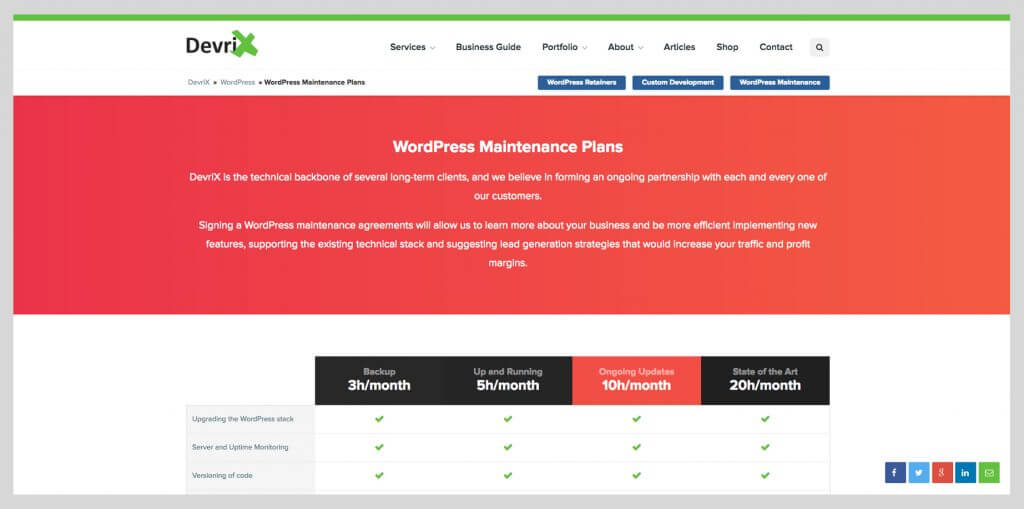As you can probably guess, there are a lot of intertwining considerations and points that need to be looked at carefully before taking a dive like this. Luckily, we were able to connect with someone who has built a SaaS business and has worked closely on the development of this model. Mario Peshev is the CEO and Business and Technical Lead of Devrix, which provides development, creative, and business growth services for WordPress platforms in need of many services, including SaaS creation.
A few years ago we’d crossed paths and I was happy to be reconnected with him to get a more expert take on SaaS to help our team at Artbees have the full picture. Well, it was a pretty long conversation so Mario and I decided to break it up into two parts. In this first part we’ll be talking about how companies can increase the quality of their services and products using a SaaS model, the challenges and drawbacks of SaaS and what is required to begin to evolve into a SaaS business.
What does your WordPress business stand to gain as a SaaS?
One of the big questions you have to ask yourself as a business is if this big transition will work with the existing resources, customer base and framework you have in place already. Then there’s that scary unknown space that requires speculation, planning and a lot of guts. Talking to Mario, he was able to outline for us the clear benefits we could potentially take advantage of to widen our scope of customers while providing our current customers with higher quality services.
Bob: Our team has been considering how to integrate a SaaS model to our services and products and we wanted to share this conversation with our users to share your knowledge and experience with SaaS.
Mario: You know essentially providing a Software as a Service means that you’re letting users sign up to a specific website and pay a recurring fee, which is usually monthly or annually and taking advantage of your services without the hassle of dealing with hosting, installations or configurations to get more integrated, simplified, multipurpose services for people who don’t really want to deal with the technical challenges. Essentially how we started as a SaaS was something that we wanted to do in order to attract different markets. For example, if you’re creating a WordPress Theme like you guys or a set of plugins, you’re limited to the WordPress market alone. But there’s a whole new world of opportunities and possibilities to attract different people who don’t use WordPress on a daily basis. Through a SaaS you can provide something that non WordPress users can use as well and take advantage of your great services and products.
Right now the way that the shopping industry works in WordPress, it’s usually a one-time purchase – which is completely wrong.
How can your customers benefit from a WordPress SaaS model?
One consideration that we’ve been continuously mulling over is how transitioning our products and services to SaaS will impact the expectations and satisfaction of our existing customers. We’ve been listening to our users’ feedback about SaaS and one delicate balance we’re aware of is how to create a SaaS system that still allows us to provide the same autonomy and support to them. When looking at the advantages this could provide to our customers, Mario outlined the mutual benefits pretty clearly.
Bob: Right, and so from the perspective of a WordPress Company what are the benefits of SaaS and what are the best ways of structuring this model – are there specific pros and cons between having a SaaS versus a product sale model?
Mario: Right now the way that the shopping industry works in WordPress, it’s usually a one-time purchase – which is completely wrong. Even if you have a renewal, it’s neither beneficial for the customer or the company. Why? Because there’s two different models that could be implemented. The first one is a really expensive product which almost no one does in the market right now that allows a company to focus of development and maintenance. The second is a really cheap product which doesn’t provide the company with enough resources to maintain and take care of security or performance. Additionally, piracy is another issue that we’re still learning more about – this also isn’t of much use to anyone either.
So from the perspective of a WordPress company, the benefit of a SaaS model is providing a unified technology, a unified technical stack instead of having to deal with third-party plugins and reduce support that are unrelated to you plus the fact that you’re able to charge customers a monthly fee. That way, if a customer isn’t willing to pay anymore, you basically just terminate your account and it’s a done deal – it’s lower maintenance, higher focus and gives you the ability to apply the latest security changes to your services and products within the system that’s automatically installed and leveraged in all of your subscriptions.
What big challenges do businesses face using a WordPress SaaS model?
All benefits and advantages on the table, there’s also a slew of challenges that would emerge from taking on a SaaS model. As preoccupying as this has been for our team, throughout our conversation with Mario, we realized that many of those challenges and hurdles aren’t actually detrimental to our vision or goals but rather just strategic decisions and selections we have to make. After all, any major change requires decision-making and brainstorming. Here, Mario shared his personal experience at Devrix and their greatest hurdles.
Bob: What challenges and successes from Devrix’s previous experience with SaaS can you share?
Mario: The main problem with SaaS is marketing because when you compete in a SaaS space, it’s a bit of a different model than competing in a specific space such as WordPress products simply because you’re competing with all other industries in the market. Additionally, people are more sensitive about their data so you need to put more time into taking care of different export models. Though in terms of WordPress, there are different questions for business owners as to how to structure their SaaS offer. Should it be a subscription-based service as a WordPress multi-site or should you just use a membership plugin or create different plans within a single site and so forth. In scaling those, it can be a bit problematic as your database grows and you need to find a way of dealing with this. Additionally because we prefer WordPress multisites for our solutions it’s not always the optimal choice because you need an external layer for dealing with themes and plugins and what could be installed for each different plan, depending on the types of payment plans you have in place for your customers.
Is there a final verdict on the SaaS model?
The first part of my discussion with Mario did bring to light and reinforce many considerations we’ve taken into account. As many articles and case studies on SaaS as you read, being able to hear direct feedback and reflections on this topic exposes a lot of factors that are so helpful to have in mind before starting in a new direction.
In next week’s post, Mario and I will go a few layers deeper in discussing the specific elements of development and programming involved in a WordPress SaaS model. Stay tuned!







No comment yet, add your voice below!